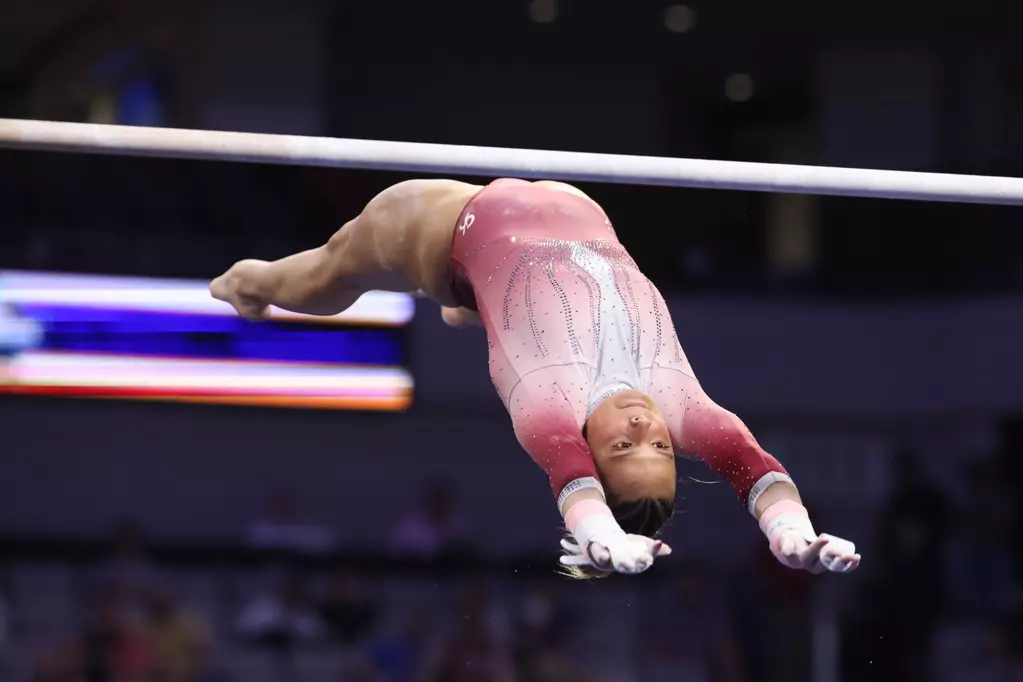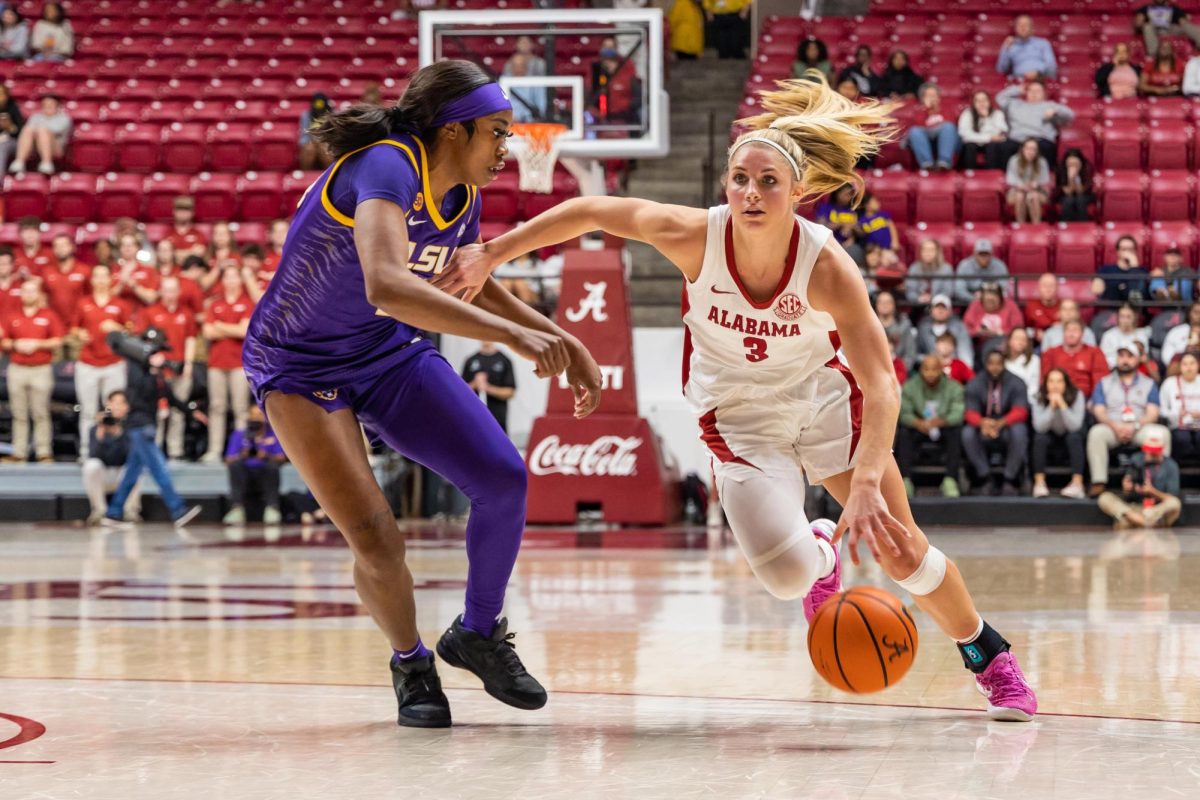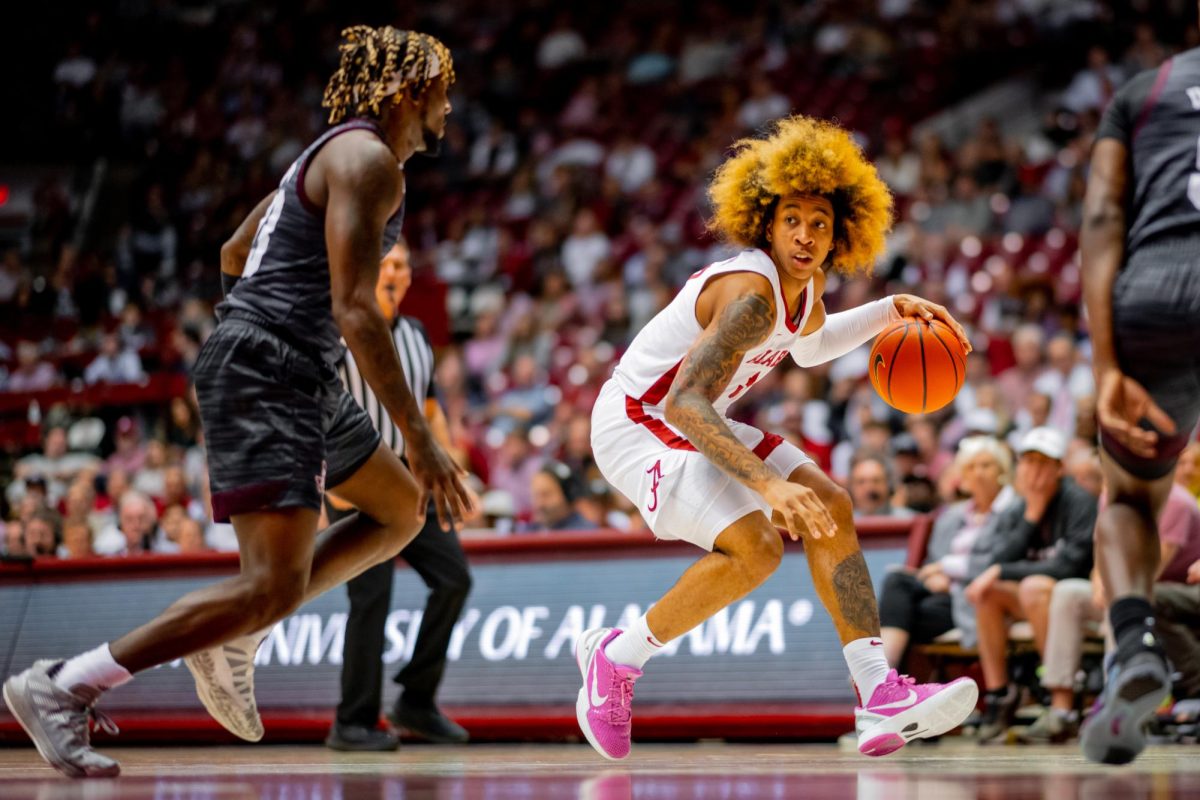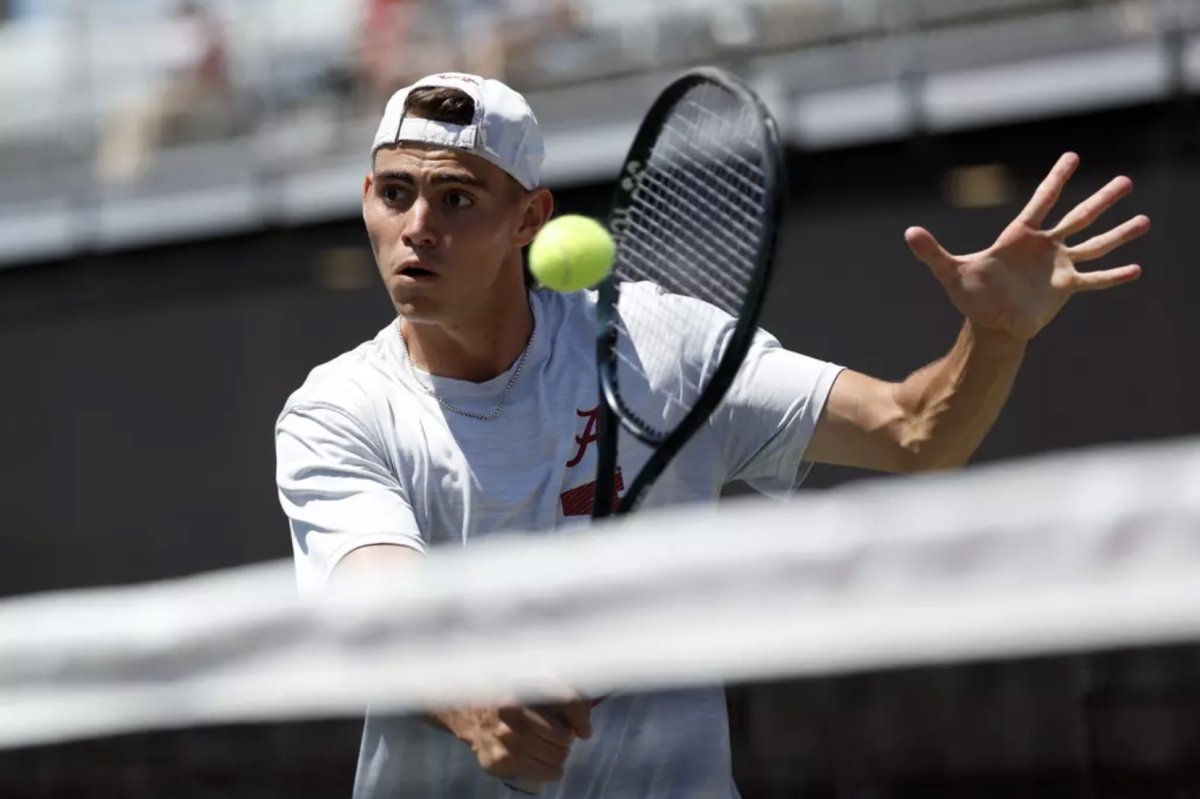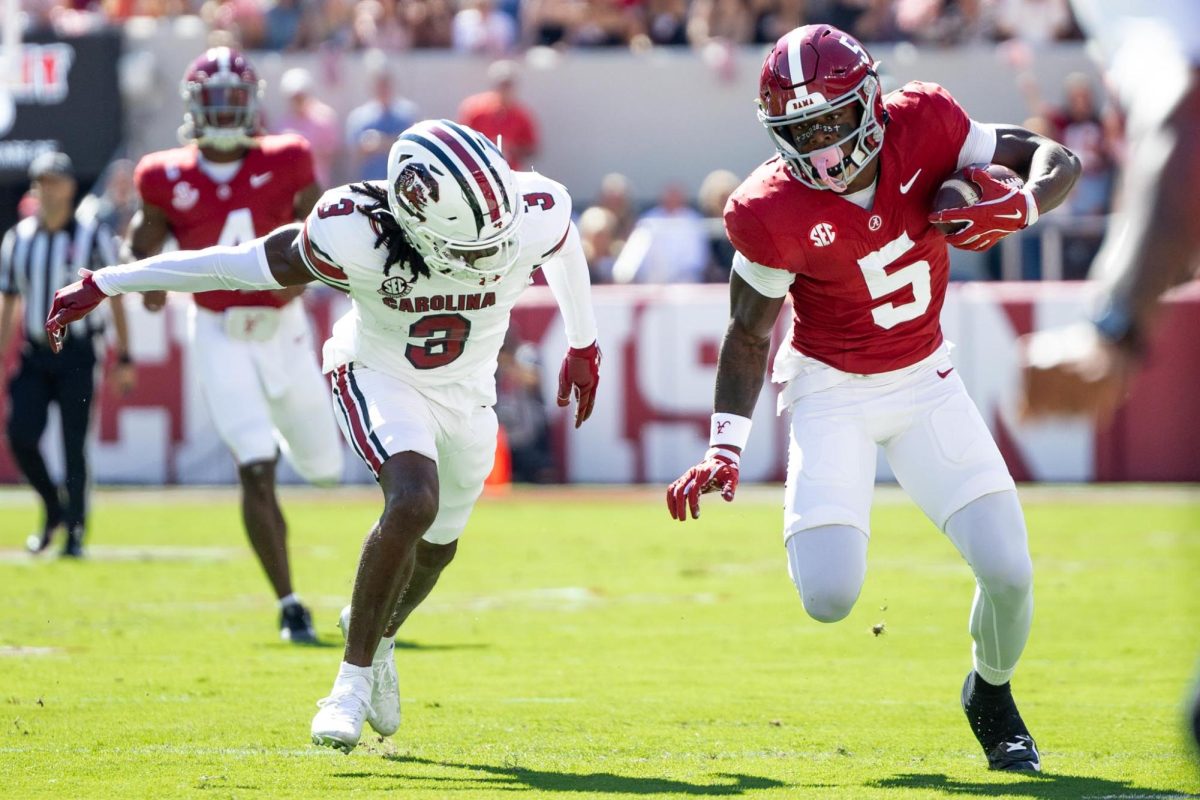The Alabama men’s track and field team opened its 2011 season with an impressive outing at the Kentucky Invitational in Lexington, Ky., over the weekend.
Junior Tyler Campbell earned top billing in the high jump at 7-0.25 feet and in the 4×400 meter relay, the squad of sophomore Kirani James, freshman Dwayne Extobol, junior Bobby Onyeukwo and sophomore Joel Lynch placed first with a time of 3:12.87.
However, the event that the Tide dominated was the 3,000 meters. Alabama placed four runners in the top 10. The Crimson Tide was led by seniors Fred Samoei, who ran the fastest time in the country in that event with a time of 8:03.20, and Julius Bor, who placed second with a time of 8:07.81.
Junior Carison Kemei finished fourth with a time of 8:15.76, and finishing eighth, senior Joel Rop ran to a time of 8:22.22.
To open a season after a layoff in between the Tide’s fall cross country season and spring track and field season, one may not expect to see such impressive numbers in its opening meet.
“It was one of our best opening meets we’ve had at the University,” head coach Harvey Glance said. “It showed us our guys did a lot of training over the holidays. Top to bottom there were great performances and numerous top-10 finishes.”
Arguably, the best performance of the meet was from Samoei, who ran a national-best time in the 3,000 meters at 8:03.20. His performance in this event impressed his coach, being that the 3,000-meter isn’t his event and he was “conservative” in his running.
“[Samoei] looked extremely strong,” Glance said. “It’s not his event, but he moved up and ran the eighth-fastest time in school history. He was conservative in the first part and finished strong.”
Even though Samoei posted a record time, the three other runners in the 3,000 meters, as well as prior distance runners, have posted impressive times in years past. Glance attributes that success to something there is no substitute for.
“There is no substitute for talent,” he said. “A coach is only as good as the athletes. They’re committed and make sacrifices to be the best they can be.”
In comparing distance running to shorter sprints, the difference goes a lot further than just the length of the run. The training, mental outlook and physical make-up of the two competitors differs greatly.
“There’s a great deal of lung capacity and endurance in comparison to explosiveness,” Glance said. “Some distance runners go from 65 to 110 miles a week. If a sprinter can get 5 miles that pretty good.”
He also said that distance runners and sprinters are made-up differently. Glance said sprinters are broader and bigger than distance runners, who tend to be wirier and skinnier. Further, they use different types of muscles to be successful in their events.
He said sprinters use what is called fast-twitch muscle fibers that create fuel through your metabolism to generate short bursts of strength and speed. The downfall to this type of muscles fiber is they fatigue faster than slow-twitch fibers.
Distance runners use the slow-twitch muscle fibers because they use oxygen more efficiently to generate fuel for continuous muscle contractions over a long period of time. These muscles fire slower than other muscles, which helps keep the muscles from tiring.
Moving forward, Glance said his squad will aim to improve in every event and learn to compete in a highly competitive conference.
“We need to know how to run in traffic, because there will be traffic,” he said. “Top to bottom, the SEC is the best track and field conference in the country. On top of everything, we need to compete against the best to be the best.”
However, when it comes to distance running, Alabama may be already on its way to being the best.




